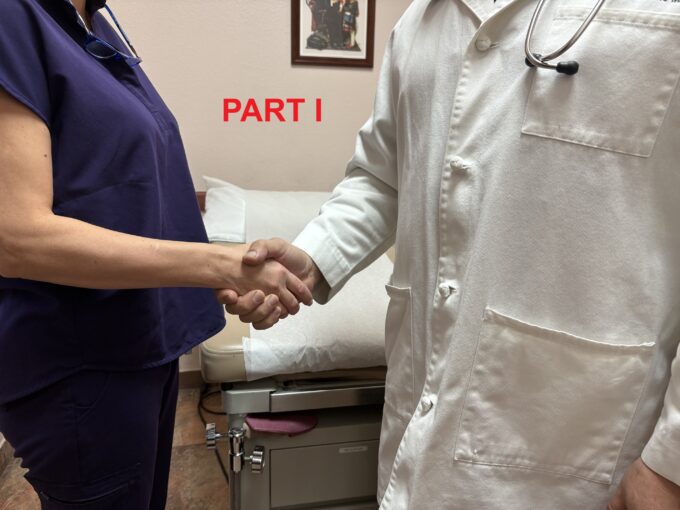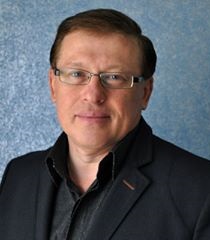The Therapist’s Guide to Build a Referral Base – Part I
By Dr. Ross Turchaninov, Phoenix, AZ
We have been promising this article to our former and current students for some time and hope that other therapists will also benefit from this information.
Building a thriving referral base with the local medical community is an uphill battle for many massage therapists. Partly, it is the therapists’ fault – not being able to communicate with physicians in their language and share scientific data about the clinical benefits of massage therapy. It is also partly the fault of the medical community, who, despite mountains of scientific research and clinical data, continue to see MT as a preventive or stress reduction option only. Finally, it is the fault of many educators who, for marketing purposes, fragmented already established and clinically tested modalities or invented ones based on personal opinions rather than science.
Many of our former students have already built very successful professional relations with local medical communities. While helping desperate patients, they enjoy professional respect and financial benefits. Here are a couple of examples of how SOMI’s former students successfully cooperate with the local medical communities for the benefit of the patients:
PERSONAL OPINON: MEDICAL MASSAGE THERAPY AND VETERAN ADMINISTRATION MEDICAL SERVICES
To build a healthy referral base with the local medical community, therapists must combine four equally important components:
- delivery of clinical results
- ability to communicate with doctors in their language
- use of independently verified therapies and modalities
- targeting the right clinics
DELIVERY OF CLINICAL RESULTS
The first vital step in successfully working with the local medical community is the therapist’s ability to deliver stable clinical results relatively quickly. Stability of clinical results doesn’t mean temporary pain relief with symptoms coming back in a week or month. Stable clinical outcomes suggest that the therapist can definitively solve clinical cases, eliminate somatic abnormalities, and restore functions.
Practicing full-body massage therapy and calling it clinical or medical massage will never convince physicians to promote such services to patients since these treatments are widely available and clinical outcomes are limited. Practically all physicians have used full-body massages at least once, and while observing the stress-reduction power of massage therapy, they have not seen clinical results.
Also, physicians will not promote and recommend a therapist’s work to patients if treatment only gives temporary results, then pain and dysfunction return. In the absence of stable outcomes, physicians will never jeopardize their authority in the eyes of their patients.
Thus, the first critical component is the stability of clinical results delivered by the therapist. Without that, the therapist will never build healthy referral relations within their local medical community.
ABILITY TO COMMUNICATE WITH DOCTORS IN THEIR LANGUAGE
Therapists must be able to communicate effectively. If the therapist and physician do not speak the same language, the doctor will never listen, cooperate with the therapist, or refer patients.
For example, the National Massage Therapy exam and the basic curriculum in every MT school are filled with various concepts of Oriental Medicine. As a result, the majority of therapists absolutely believe that Oriental and Western medicine are two different medical practices. This is a grave professional mistake since the human body is the same and governed by the same principles. Oriental and Western Medicine are the same practices with only one distinction – different delivery methods.
Here is a simple example: Therapists widely use the concept of energy flow Chi (Qi) while working with clients/patients or promoting their services to the local medical community. While clients will listen, the physicians lose interest immediately.
So, is the concept of Chi wrong? No, the real problem is therapists’ inability to explain what they are doing correctly. The idea of Chi was developed 5000 years ago by Chinese physicians who formalized it through clinical observations and meditations.
We are now in the 21st century and know that Chi energy in the human body is called BIOELECTRICITY. Bioelectricity governs ALL our functions and, indeed, flows between organs and tissues.
I want readers to pause and read the following statement carefully: While talking with the modern medical community and trying to promote their important work, therapists still use the 5000-year-old language of Chinese doctors who simply didn’t know about bioelectricity then and called it Chi!
Let’s imagine ourselves as 21st-century physicians. Their work is based on scientific data and research to help patients, and from that perspective, the Chi concept will never generate any interest. Thus, gaps in communication and the usage of incorrect language will burn bridges with local physicians.
AMTA and other professional associations complain about how the medical community resists accepting MT as part of modern medicine. Incorrect language and concepts taught to therapists are the primary reason for this unfortunate reality.
SOMI has published articles about bioelectricity’s critical role in all body functions and how important MT is in restoring its normal values and flow. Therapists may use these highly referenced data to communicate successfully with local physicians.
Here are links:
HOW MASSAGE THERAPY HEALS THE BODY. PART II: Streaming Potentials
HOW MASSAGE THERAPY HEALS THE BODY. PART I: Piezoelectrical Phenomenon in the Soft Tissue
USE OF INDEPENDENTLY VERIFIED THERAPIES AND MODALITIES
Physicians depend on the scientific basis of information. From the very beginning, physicians are educated on the scientific foundation of every treatment they are supposed to prescribe or recommend to patients. This is doctors’ core belief.
The same basic idea should be in the minds of therapists when they select training in clinical modality or CEU classes. Unfortunately, some educators use random medical references to support the ”invented” clinical modality, making educators’ claims look legitimate. Therapists should ask educators specific questions before enlisting in the training. If a third party tested the modality promoted by the educator and if its clinical results were published in the medical literature. If no such data is available, educators sell personal opinions, and nobody in the medical field will listen without proper evaluation of technique or modality by a third party.
Let PubMed serve as your guide. If someone independently verifies a technique or modality you are interested in, enroll in their training.
https://pubmed.ncbi.nlm.nih.gov/
Type into the PubMed search engine Muscle Energy Techniques, Connective Tissue Massage, Lymph Drainage Massage, etc.. You will get a large number of scientific articles from third parties who examined the technique or modality in a clinical setting and found it clinically sound. If a PubMed search does not produce such data, avoid that training. Nobody in the medical field will listen to a therapist who uses therapy based on the author’s opinion!
TARGETING THE RIGHT CLINICS
Finally, let’s discuss how to approach physicians. Let’s say a therapist has mastered the three previously discussed sections, which is what our former successful students accomplished. Then, the number one question becomes: how should they approach local doctors with an offer to cooperate in treating their patients?
If you still want to form a successful referral base with local physicians and only need to do that, DO NOT waste your time talking with neurologists, orthopedic surgeons, chiropractors, or physical therapists! Medicine is also a business; unfortunately, a successful medical massage practitioner can be seen as a competitor or even a hoax. SOMI had seen several therapists graduate from our Medical Massage program and lose their jobs in chiropractic clinics since patients decreased the number of chiropractic treatments in favor of Medical Massage sessions. In such a case, who should the therapist approach?
FAMILY DOCTORS!!!
Part II of this article will discuss how to collaborate correctly, and we will share tools for entering the local medical community with readers.
If readers are serious about the clinical application of massage therapy and the exceptional power of Medical Massage, join SOMI and like-minded therapists from around the world on January 18-19 for a Live Webinar on Medical Massage theory and soft tissue evaluation.
Also, SOMI offers the first 2025 hands-on training in Medical Massage Protocols in Longwood, FL, on February 8-10. All details are here:
Medical Massage Continuing Education
ABOUT THE AUTHOR
Dr. Turchaninov graduated with honors from the Odessa Medical School in Ukraine in 1982. He was admitted to the residency program of the Kiev Scientific Institute of Orthopedy and Rehabilitation, which he completed in 1985.
From 1986 to 1992, he worked as a supervisor of the rehabilitation program for the Ukrainian Ministry of Public Health and later as a scientific researcher at the Kiev Scientific Institute of Orthopedy and Rehabilitation. During these years, he also worked with the medical team of the relief effort following the Chornobyl nuclear plant disaster.
In 1989, Dr. Turchaninov obtained his Ph.D. in medicine and graduated from the manual therapy and medical massage programs designed for physicians.
In 1992, Dr. Turchaninov was invited to be the Medical Director of the somatic rehabilitation program in clinics in New York City and Scottsdale, Arizona.
Dr. Turchaninov is the author of more than 100 scientific papers and publications in European and American medical and massage journals. He authorizes three major textbooks: Medical Massage, Volumes I and II, and Therapeutic Massage: A Scientific Approach. He lectures in the U.S. and abroad on manual therapy and medical massage and is regularly invited to speak at American and international conferences.
Dr. Turchaninov founded the Science of Massage Institute, which brings clinical science into massage therapy and builds professional bridges between medical and massage communities. Dr. Turchaninov is the Editor-in-Chief of the Journal of Massage Science.
Category: Medical Massage
Tags: 2024 Issue #3


